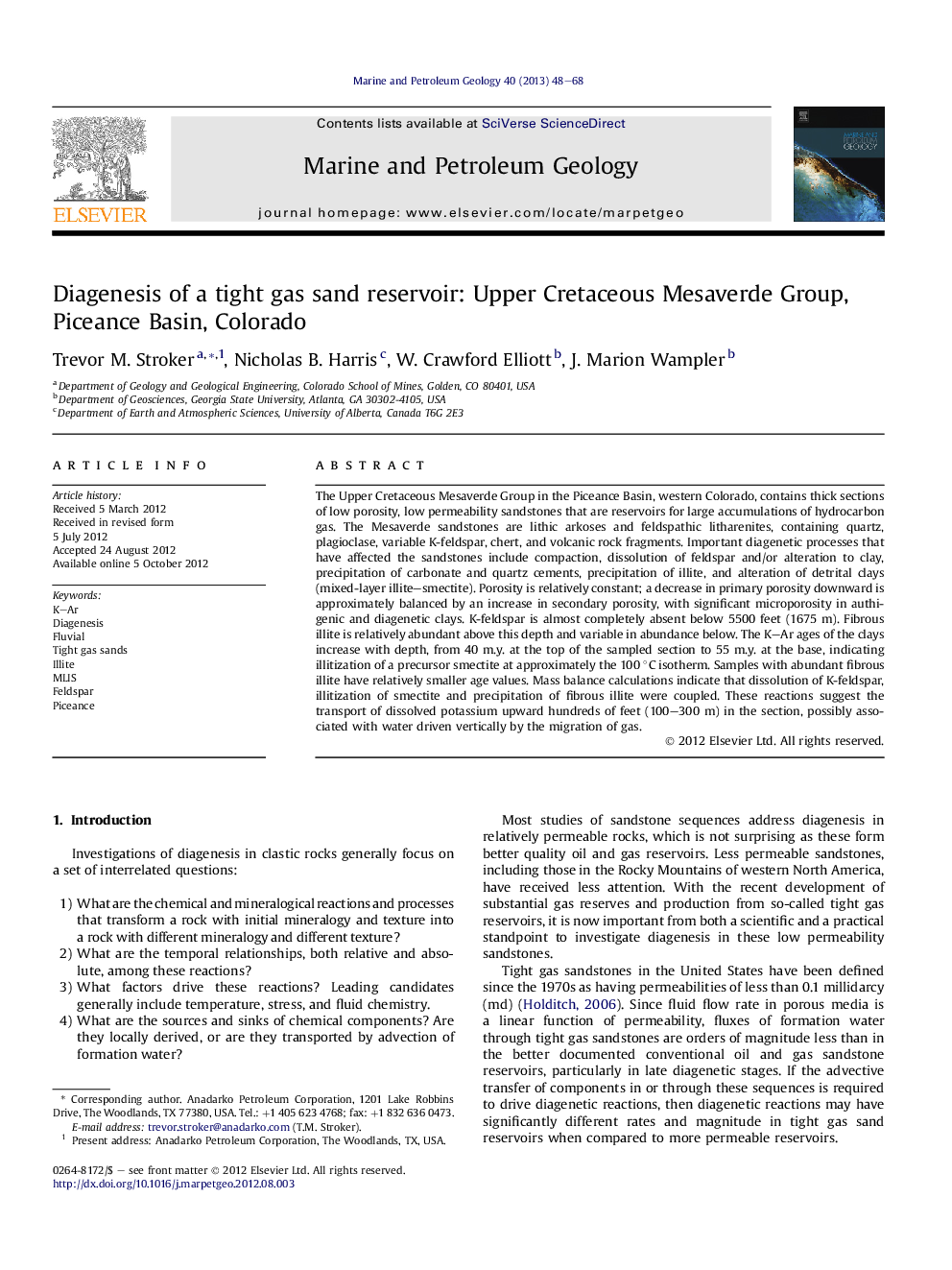| Article ID | Journal | Published Year | Pages | File Type |
|---|---|---|---|---|
| 4695802 | Marine and Petroleum Geology | 2013 | 21 Pages |
The Upper Cretaceous Mesaverde Group in the Piceance Basin, western Colorado, contains thick sections of low porosity, low permeability sandstones that are reservoirs for large accumulations of hydrocarbon gas. The Mesaverde sandstones are lithic arkoses and feldspathic litharenites, containing quartz, plagioclase, variable K-feldspar, chert, and volcanic rock fragments. Important diagenetic processes that have affected the sandstones include compaction, dissolution of feldspar and/or alteration to clay, precipitation of carbonate and quartz cements, precipitation of illite, and alteration of detrital clays (mixed-layer illite–smectite). Porosity is relatively constant; a decrease in primary porosity downward is approximately balanced by an increase in secondary porosity, with significant microporosity in authigenic and diagenetic clays. K-feldspar is almost completely absent below 5500 feet (1675 m). Fibrous illite is relatively abundant above this depth and variable in abundance below. The K–Ar ages of the clays increase with depth, from 40 m.y. at the top of the sampled section to 55 m.y. at the base, indicating illitization of a precursor smectite at approximately the 100 °C isotherm. Samples with abundant fibrous illite have relatively smaller age values. Mass balance calculations indicate that dissolution of K-feldspar, illitization of smectite and precipitation of fibrous illite were coupled. These reactions suggest the transport of dissolved potassium upward hundreds of feet (100–300 m) in the section, possibly associated with water driven vertically by the migration of gas.
